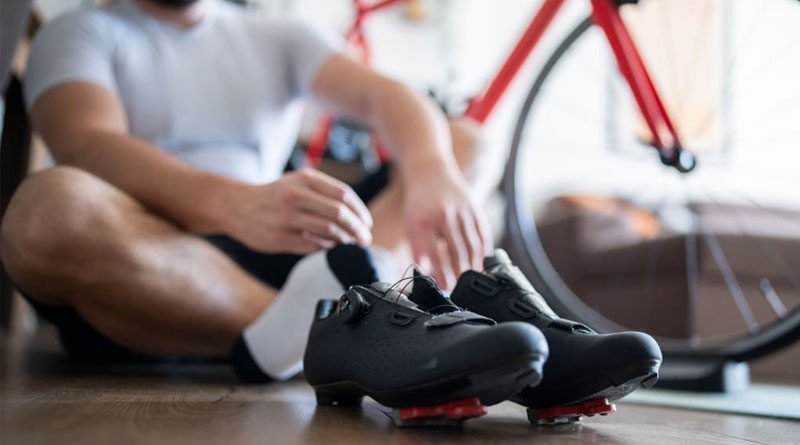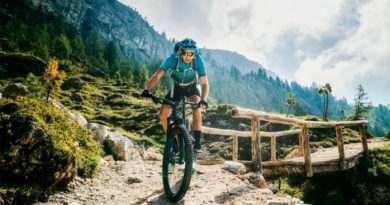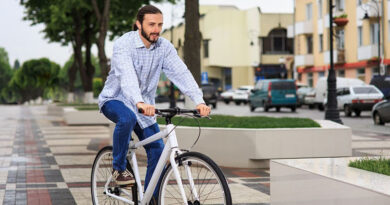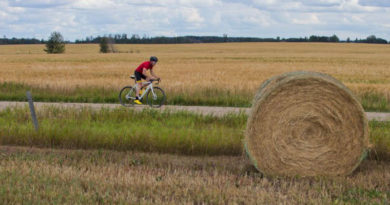Cycling Shoes too Big? Here’s what to Do
A good pair of cycling shoes is a very important item in the kit of a bike rider. Shoes are a part of the gear that directly affects a biker’s performance. For a new cyclist, up to a second or third pair of shoes is often spent experimenting. The cyclist is getting to know what suits him and what he is comfortable with. It’s not a surprise that many cyclists end up with bigger shoes. Even experienced riders make this mistake while trying out a different brand or model of cycling shoes. This article discusses what to do when your cycling shoes are too big and how it affects your performance.
Try Using Insoles
To accommodate bigger cycling shoes with the help of insoles, start by selecting a suitable insole that offers the necessary support and cushioning for your feet. Trim the insole if needed to fit comfortably within the shoe. Place the insole at the bottom of the shoe and ensure it sits flat and snugly. Test the fit to make sure there are no areas of discomfort or pressure points. Additionally, consider adjusting the shoe’s closure system to provide a secure fit around the foot. Finally, take your time to break in the shoes gradually, allowing your feet to adjust to the new fit with the added support of the insoles.
Currex BikePRO Insoles

These inserts are made with advanced technology to provide unparalleled support, comfort, and stability while riding. By evenly distributing pressure to the pedals and stabilizing your knees, they optimize power transfer and reduce the risk of injuries. Designed to improve muscle efficiency and eliminate discomfort such as numbness and hot spots, these inserts are a game-changer for cyclists of all levels. Whether you’re hitting the road, navigating mountain trails, or competing in triathlons, investing in quality insoles like BikePRO can significantly enhance your performance and overall enjoyment of the sport. Remember to replace them every 1 to 2 years to maintain their effectiveness and support.
See the Currex BikePRO Insoles
What Problems can Bigger Shoes Cause?
Shoes larger than your feet can cause both, performance issues as well as medical issues. Here’s how both affect you.
Performance Issues
Cycling is all about efficient energy transfer from your legs to the back wheels. Shoes are the connection between you and your bike which makes them one of the most crucial points of energy transfer. Wearing a shoe larger than your foot means a dangling shoe or a moving foot inside the shoe, whichever way you want to say it.
A dangling shoe doesn’t transfer energy from the foot to the paddle efficiently because it absorbs energy. If you are into competitive riding, it can cost you precious time. An incorrect shoe size also displaces the cleat position. To transfer energy efficiently from the foot to the pedal, the cleats have to be positioned correctly under the feet. Not only do displaced cleats compromise performance, but they also cause great discomfort which reduces stamina as well as enjoyment while riding.
Medical Issues
Cycling shoes are stiffer than regular shoes. The stiffness provides support to the feet while pedaling. In most cases, larger shoes mean a longer shoe in which the foot can move back and forth, and sometimes, laterally as well.
The pedaling force comes from the widest part of the feet, usually known as the ball of the foot. The cleats are also located under the ball of the foot for optimum energy transfer. When the foot moves back and forth inside the shoe, the position of the cleats is displaced relative to the ball of the foot. The rider then starts exerting force with either the toes or the sole. Doing so develops hot spots under the foot which become painful and cause extreme discomfort.
Similarly, if the shoe slides forward in the shoe, the tongue of the shoe bites the foot and the toes. When the foot slides backward, the Achilles tendon comes under pressure which can cause numbness in the foot. Along with hot spots and numbness, you may also experience blisters in areas of the feet experiencing pressure.
Why do Cyclists end up with Bigger Shoes?
Bike riders end up with bigger shoes for the following reasons.
‘Wide feet’ misconception
Most people believe that their feet are wide. But when correctly measured, their feet fall in the range of average sizes. The reason is that the foot size is not only the width of the foot, it’s the whole girth of the foot which includes the width and the height of the foot. In short, it’s the circumference of the foot that is wide.
But what people do is that they try to compensate for the wider circumference of their foot by buying bigger shoes which are not wider, but longer. The length of an adult foot remains constant. The width – and in some cases the height – changes.
Feet come in a variety of widths. It’s really difficult for some people to find the right size of shoes for themselves. If you are having difficulty finding the right size, some research can help. You should also get in touch with an experienced bike shop. But keep in mind that the length of the shoe should not change to compensate for the girth of your foot.
‘Roomier shoes are more comfortable’ misconception
Another misconception among riders is the belief of having wiggle room inside their cycling shoe for longer rides. Many riders believe that a fit shoe would become uncomfortable during long hours of riding. People often try shoes by walking to check if the shoe is comfortable. Having space in the shoe certainly makes it feel comfortable. But walking doesn’t simulate the pressure on the feet as in long rides. This misconception is widespread when actually, the opposite is true.
The longer you ride the more support your feet require. But in bigger shoes, the much-needed support for tired feet is not present. The result is a loss of performance as well as an extremely uncomfortable riding experience. You may even develop pain in your feet that is hard to get rid of.
You shouldn’t get bigger shoes unless you have an extreme case of corns, calluses, bunions, hammertoes, or if your feet swell during long rides in the summer. Your cycling shoe should fit you perfectly. The most space you can have is from 5mm to almost 1cm if you have the above-mentioned medical problems.
One foot is bigger than the other
It is common for people to have one foot bigger than the other. Usually, the difference is very subtle to be noticed. But in certain medical conditions, the difference can be more and is noticeable. There are strategies to deal with this situation which are mentioned below.
Small Feet
Some people have really small feet which makes it difficult for them to find properly fitting shoes. The manufacturers have this outdated notion that small feet are usually thinner. But in reality, people can have small feet with wider circumferences, especially, women. But people increase the length to compensate for the circumference as mentioned above. People with thin small feet have thin shoes causing the cleats to overhang. Cleat overhang can cause flex causing difficulty in engaging the pedal. Such a situation also causes riders to buy bigger shoes.
Marketing
Companies pour a lot of money into marketing because every company wants to grab attention to sell their product. Sometimes, it gets really hard to distinguish genuinely good products from products that are hyped up through bot engagement or false reviews. The cycling industry has the same problem. People who don’t do self-analysis often fall for attractive marketing, reviews, and forum mentions – without considering their riding priorities. This is a great way to end up with the wrong size of shoes. Learn how to choose the right size of cycling shoes here at REI.
How Should Cycling Shoes Fit?
- A cycling shoe should fit like a glove. It should fit the foot snugly without putting pressure on any part of the foot.
- The toes should touch the tip of the shoe without any pressure. If you feel pressure in your toes or the front part of the foot, the shoe is too tight.
- Don’t buy tight shoes and expect them to stretch.
- The foot should be secure in the shoe and shouldn’t move.
- If there is back-and-forth movement or lateral movement or a heel that slips up and down, then the shoe is too big.
- Wear socks while testing cycling shoes.
Tips to Deal with Bigger Shoes
People don’t buy bigger shoes for themselves as if they wanted to buy shoes that way. In most cases, the difference between the foot and the shoe size is small.
- There are insoles of varying thicknesses available in the market which you can try based on the difference between the shoe and the foot size. It is recommended that you start with an inexpensive one at first. If it works, invest in a proper insole. Usually, it is the insole of the shoe that is the weakest part of any shoe. The outsole and the upper last much longer in most cases.
- You can put a 3-dimensional polyester cloth or a gel heel stopper to stop the movement of the foot inside the shoe.
- Wear thick socks or even double socks if the difference between shoe and foot size is greater. Using waterproof socks is a much better option as they are hassle-free and last longer. However, multiple layers of socks can cause blisters. You can also have thin insoles with thick socks.
- If you have different size feet, you can order different size cycling shoes. Some manufacturers deliver a pair of different-sized shoes.
Conclusion
Cycling shoes directly affect a bike rider’s performance. It is important to get the right fit. Bigger cycling shoes absorb energy while pedaling making the ride less efficient. The cleat position is also displaced which not only makes the ride less efficient but also causes great discomfort and pain. Riders often experience hot spots, numbness, and blisters along with pain. Cycling shoes should fit like a glove without putting pressure on any part of the foot. The foot should stay in place and shouldn’t move about inside the foot. If you have bigger shoes, you can use insoles, socks, a piece of cloth, or gel heel stoppers inside your shoes to stop your feet from moving.




